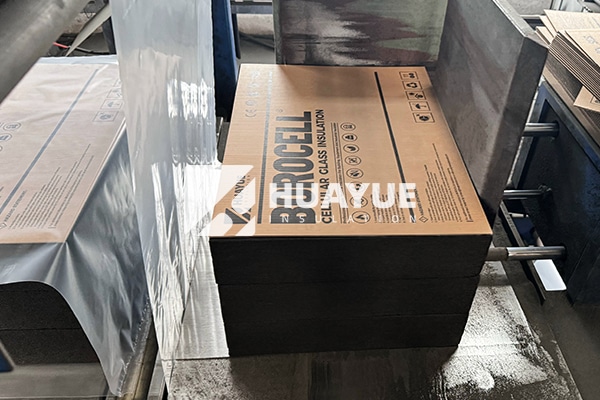Cellular glass insulation seems expensive from the start. You may wonder if its price is justified based on performance and lifetime value.
Cellular glass insulation typically costs between $10 and $30 per square meter. This cost depends on thickness, density, the supplier, and order size. The price includes its unique features and long lifespan.
A cost breakdown for cellular glass insulation goes beyond material rates. You need to consider labor, transport, project size, and the complexity of installation. For larger chemical tanks, thicker insulation usually means higher prices. In my experience comparing quotes, ordering in bulk or via an OEM channel may reduce the average per-unit price. While cellular glass costs more than mineral wool or foam plastic, its longer service life and simpler maintenance can balance this investment. I learned firsthand that focusing only on the upfront price can be misleading. When you include repairs, replacements, and downtime, cellular glass may save significant money over years, especially in harsh industrial settings that need reliable tank insulation.
What are the disadvantages of cellular glass insulation?
Cellular glass insulation is not perfect. What problems could affect your decision or the success of tank insulation projects?
Cellular glass insulation’s biggest disadvantages are higher upfront cost, brittleness under strong stress, limited flexibility for curved surfaces, and installation challenges compared to flexible materials.

From my experience, the primary weakness is cost. Not every budget allows for premium materials, and cellular glass sits at the top end. It is denser than other insulations, making it more fragile if handled carelessly; a hard hit or fall can crack or chip the block. This makes it less useful for areas with frequent equipment movement or risk of impact. Since cellular glass does not bend or flex, jobs with pipes, uneven tank surfaces, or odd shapes take longer and require more skill. Compared to flexible foam or mineral wool, installers need to measure, cut, and fit each section with greater accuracy. If installation is rushed, gaps may reduce its effectiveness. Extra weight also makes bulk handling and transport more complicated. These factors mean cellular glass insulation takes more planning, careful work, and may cost more labor hours than flexible alternatives. For tanks in basic environments, you might not need this premium protection, but for mission-critical, cryogenic, or high-humidity use, its disadvantages can shrink when you look at the whole life cycle.
How much does cellular glass insulation cost?
You want direct numbers and practical advice to plan your budget. What does cellular glass insulation really cost when all factors are included?
Cellular glass insulation usually costs $10–$30 per square meter. This depends on the thickness, where you are located, how much you order, and if you can negotiate with the supplier.

Every tank installation project is a little different. If you need thicker sections for cold storage or chemical safety, the cost increases with each added inch. The region matters too—North America and Europe pricing is often higher than Asia, mainly because of labor and freight costs. Suppliers often lower prices for larger contracts, so project scale plays an important role. Transportation fees can also add up, especially if your facility is far from the production base. When I compare costs to other premium insulations like high-density mineral wool, cellular glass usually comes out higher for material price. However, the savings often come in the maintenance phase. Cellular glass is non-absorbent, so it resists weather, chemicals, and water, which means repairs and replacements are fewer. For the total installed cost, add labor, accessories such as tapes and screws, and surface prep. If you have multiple tanks or a huge surface area, ask for a tailored quote from the manufacturer. Clear communication about thickness, density, and project needs will help get the most accurate bid.
What is the R-value of cellular glass insulation?
Thermal resistance is key for tank design and safety. What is the true R-value for cellular glass insulation in practice?
Cellular glass insulation generally has an R-value between 3.0 and 4.0 per inch. The actual number depends on the manufacturer and specific product.
If your project focuses on energy savings and temperature control, R-value should be one of your first questions. Cellular glass rates between 3.0 and 4.0 per inch, making it more efficient than mineral wool and competitive with foam board. Most industrial jobs use thicknesses from 2 to 4 inches, giving an overall R-value between R-6 and R-16, enough for cryogenic, chemical, or steam applications. In my work for tank upgrades and new builds, I always ask suppliers for third-party test reports to check the R-value for each batch. Density and proper installation are critical—gaps and joints lower the effective R-value. I insist on skilled installers who pay close attention to sealing every crack. Compared to other insulations, cellular glass holds its R-value over time because it doesn’t absorb water or degrade with heat. For many chemical plants and cold storage tanks, this stability is the biggest reason I recommend it for long-term reliability.
Conclusion
Cellular glass insulation costs more upfront. Its long lifespan, low maintenance, and strength make it a smart choice for industrial tanks that need reliable and lasting thermal protection.

